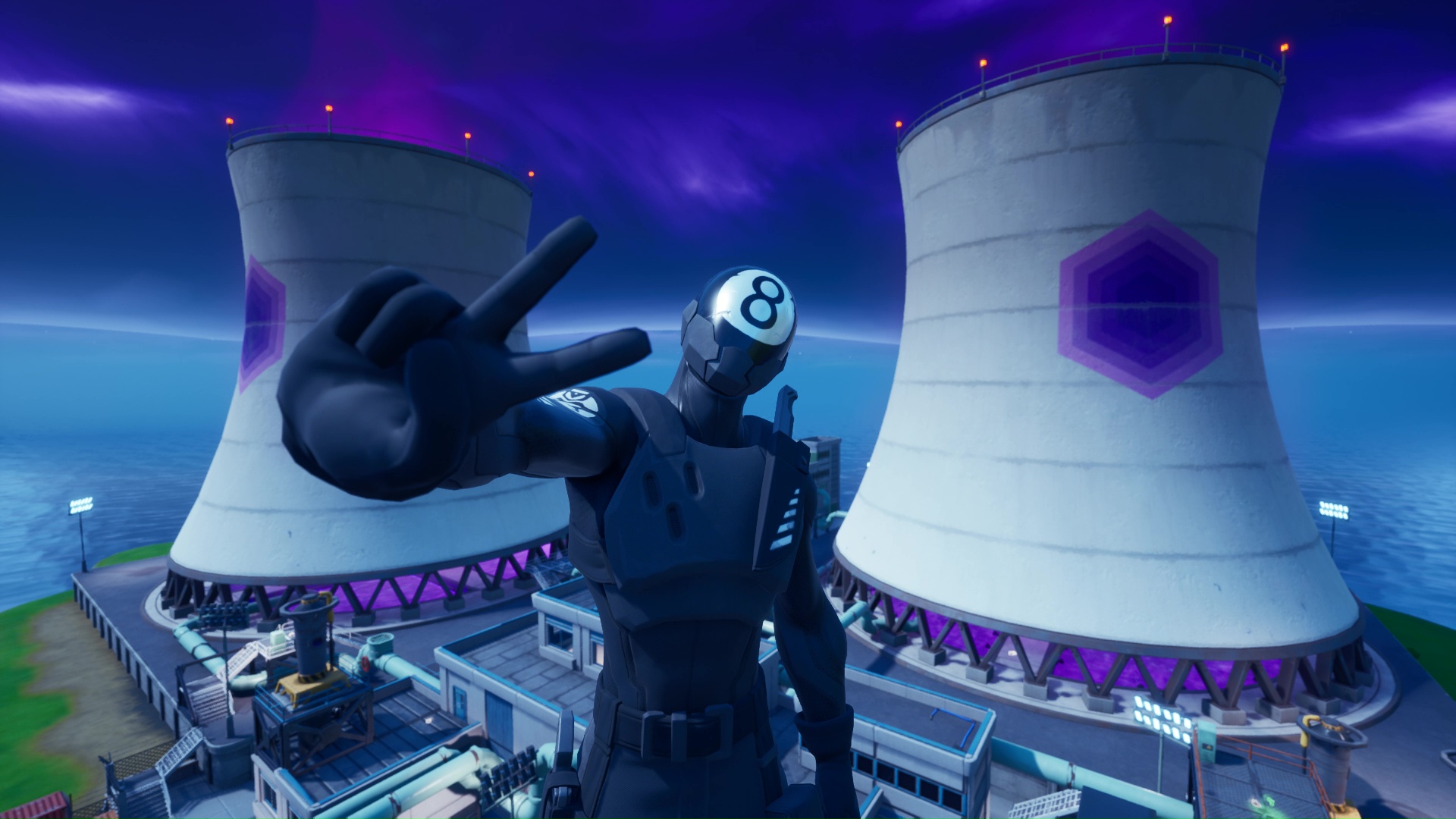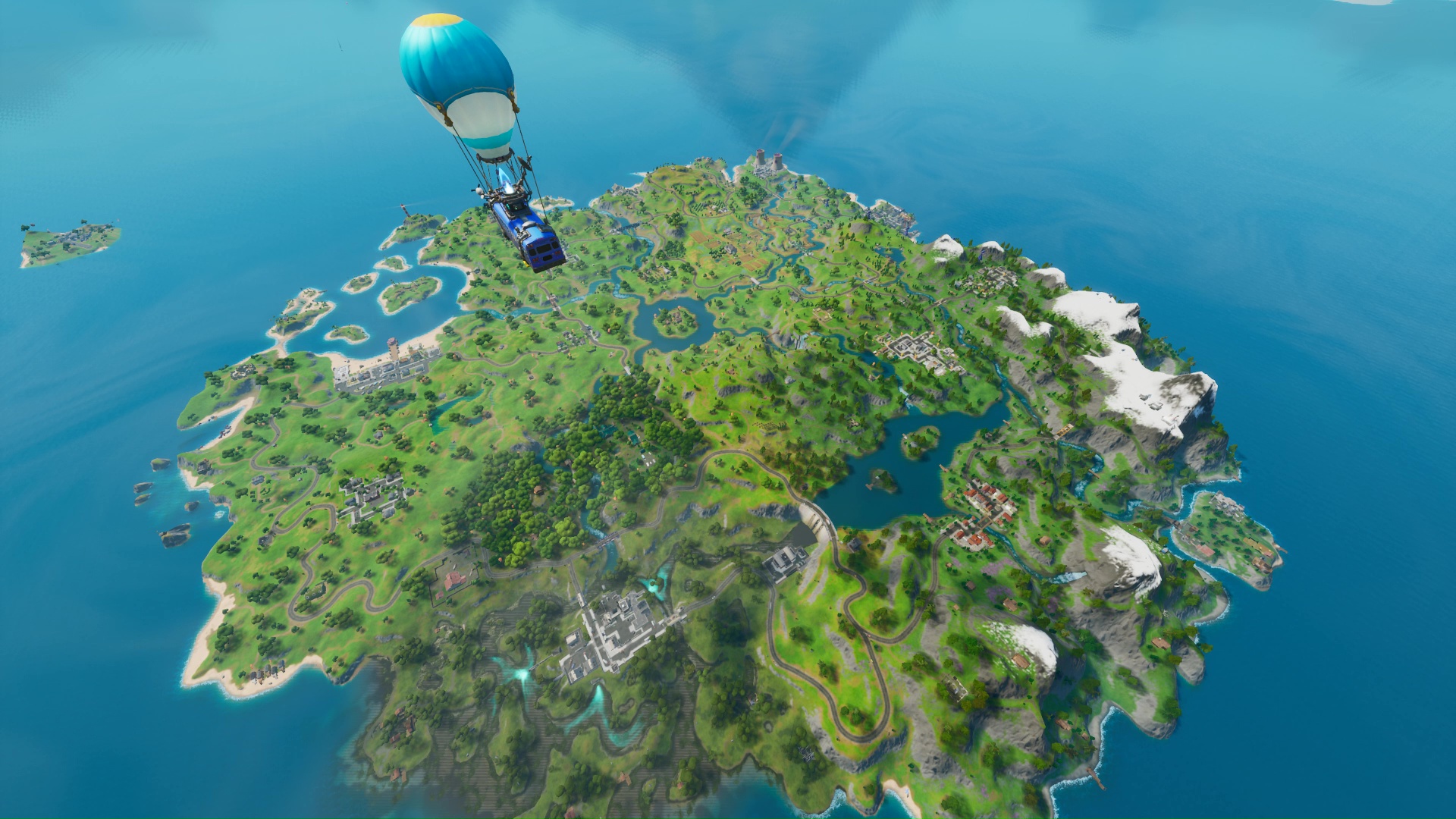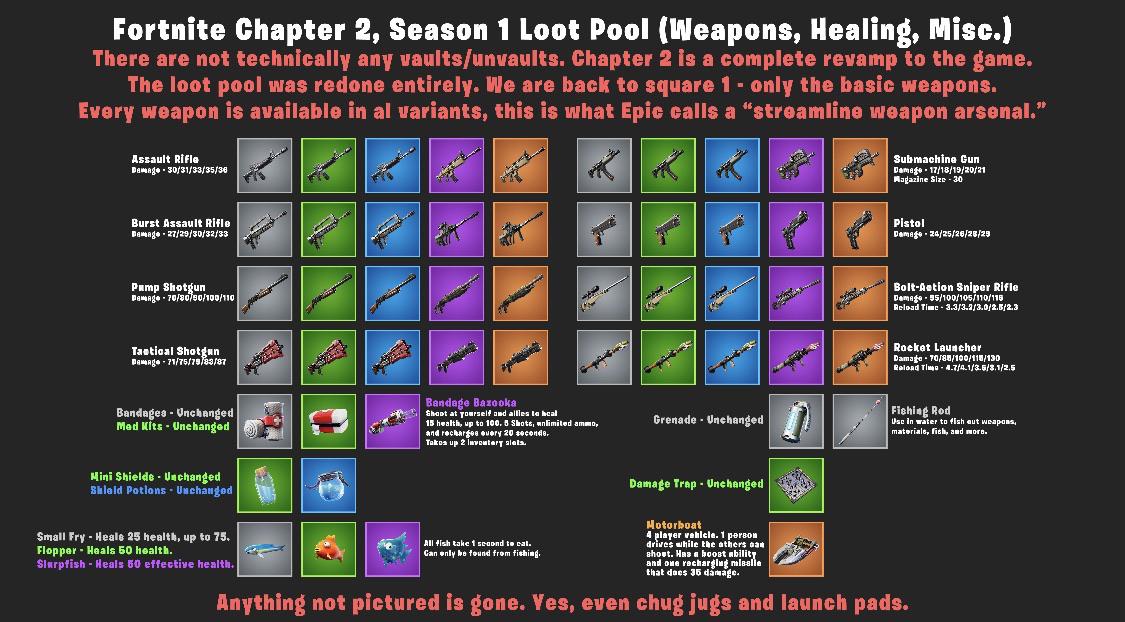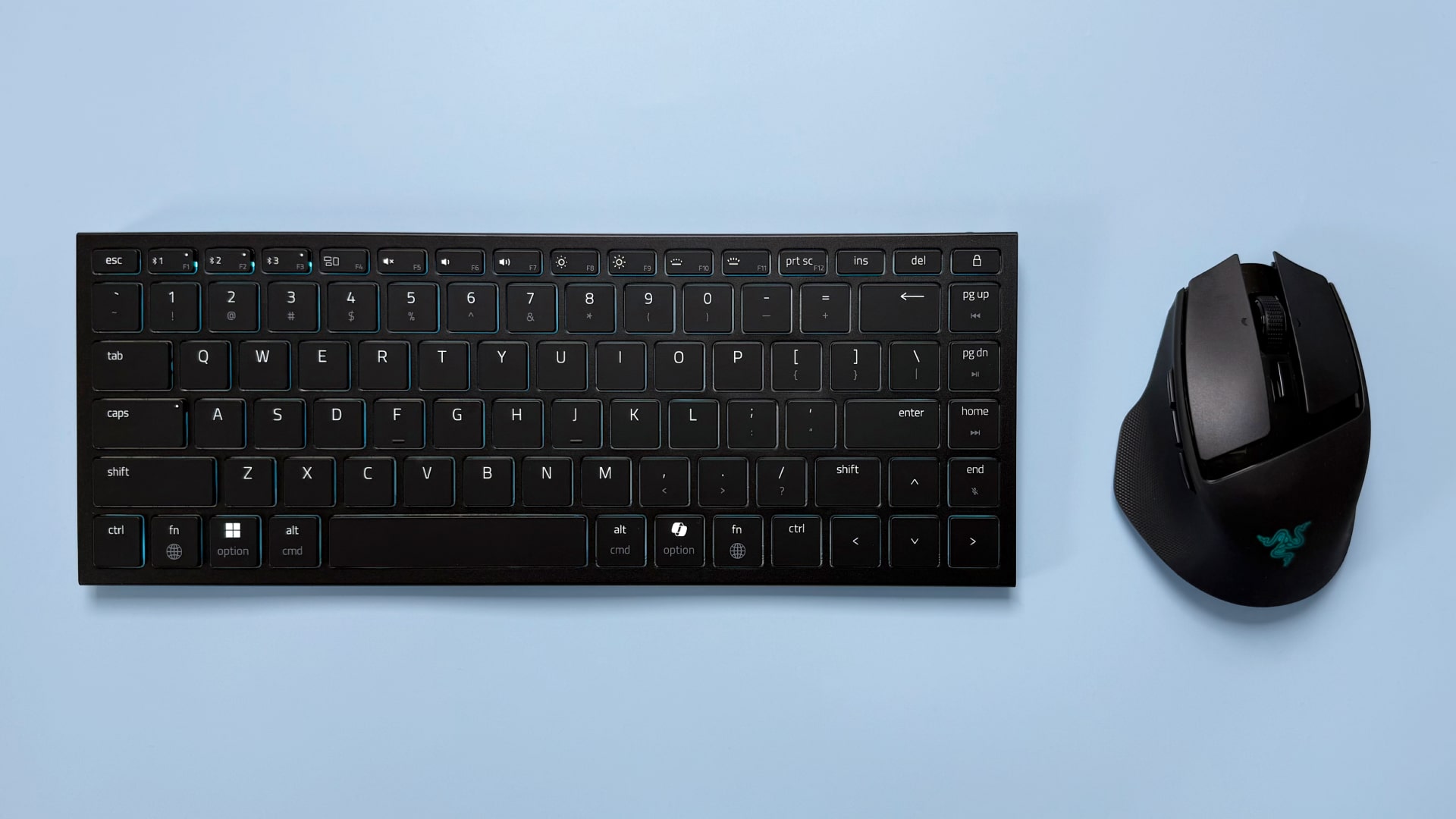Fortnite Chapter 2 feels like what Fortnite was always meant to be
Epic finally knows what it's making. Chapter 2 isn't a reinvention, it's a brand new foundation.

I can't imagine Epic planned for any of this. Fortnite Battle Royale's initial release felt like Epic's Hail Mary, a last chance at saving its base-building survival game by coasting on PUBG's then insurmountable popularity. It was bone-thin, a BR lacking any distinct characteristics. Then people began building massive towers in seconds. Epic added the ability to turn into a bush. Players started riding rockets.
Embracing the playful sandbox ethos, Epic sped up the building system, introduced gripping in-game events, and over the course of two years, disassembled and reassembled the island, piece by piece, into something completely new. We watched a company make a new game from the pieces of another, live.
Fortnite's been keeping the pace for over two years now. That's 10 three-month-long seasons of big map changes, new weapons, traversal items, traps, vehicles, and bizarre cross-media collaborations with the likes of the NFL, Batman, Stranger Things, and a man that wears a large marshmallow on his head and plays electronic dance music for the children. Clearly, Epic has built something magnetic, but I've always wondered what Fortnite would look like if Epic already knew what it was and would become.
Chapter 2 is the closest we'll get to a true 1.0, a cohesive vision built for what Fortnite morphed into. It's a broad refinement that pares down battle royale to its most essential components from those two years of rapid experimentation to create something more approachable and fun, even if the most common cause of death is still 12-year-old building gods.
A warm welcome
When I woke up to take in all the Fortnite Chapter 2 news and check in with the UK folks in the PC Gamer Slack, I saw something inconceivable. Phil Savage, noted guy-that-doesn't-play-Fortnite, had won a solo Fortnite match—and with six kills, too!
Above: A suite of feedback in the form of medals and flashy graphics make every action feel rewarding, nice for newbies.
Phil's spent years and years pointing and clicking on moving objects with some degree of accuracy, I'm sure, but I've been playing Fortnite since the start and only reel in a win every couple weeks. Not to discredit Phil, the cheating bastard, but I'm guessing this is the new matchmaking system in action. Players are sorted into matches with players of a similar skill level, including bots where necessary. Of course, Phil was probably up against Ninja and Tfue and such. Of course.
Keep up to date with the most important stories and the best deals, as picked by the PC Gamer team.
Technically, the system was introduced back in patch 10.40, but an influx of new players with Chapter 2's launch has seemingly seeded the overall population with enough people to really fill out the lower tiers. Excusing the occasional smurf, it'll likely take most new players a while to work their way up to the preteen Fortnite savant tier, too.
I'm still getting my ass kicked, but I'm also sitting on years of statistics, enough to punt me up to a challenging tier of competition for chokelords. And that's fine. I'll never outpace the average builder, but at least I can tread water among competitors and secret bots that make me feel like a little more than a sentient brick.
New boss, same as the old boss
As a returning player, I've enjoyed exploring all the new points of interest and grappling with the terrain with the storm on my ass. Without the usual traversal items—they've all been vaulted—Chapter 2 feels like a return to the early days of battle royale, where poor positioning and movement almost guarantee death by circle. I'm thinking about movement far more strategically than I was at the tail-end of Season X, where launch pads and driftboards and mechs made an approaching storm as threatening as a soft fart.
Besides a slight increase in size, the new map is defined by the addition of rivers running from the ocean and into its center. Players can swim or pilot boats through the water, but these zones are currently the lone means of speedy traversal. It's an interesting calculated risk, choosing whether to take a chance on making a detour towards water, hoping to find a boat or at catch a ride with the current, or stick with the ol' legs and ground combo. Water traversal is faster, but you're bound to run into others with the same idea in mind.

Rivers also break up the points of interest like a sloppy pizza, so no lucrative loot zone feels more isolated than another. It brings an inherent symmetry to the map that didn't ever quite take hold on the old one, where players flocked to a few popular POIs like Tilted Towers and Pleasant Park for the guarantee of immediate action and plentiful loot.
The learning curve remains a couple degrees from vertical.
Those big, juicy POIs are relegated to the outer edges of the new map rather clustered together or centrally located. Encounters, so far, are staggered nicely and far less predictable than before. Maybe players have simply yet to work out where Tilted 2.0 is. I'm inclined to think the map design is just doing it's job.
But I can't say the map itself has fundamentally changed how I play. It's still early days, but most areas feel like reinterpretations of old locations. There are deep canyons and thick forests and small towns and massive factories connected by roads and hills and meadows and bridges—everything's so familiar I've yet to see a match affected in a way that couldn't be done on the old island. It's not a major problem, and I still have some exploring to do, but I was hoping to see some truly surprising changes beyond a sensible rearrangement.

Building hasn't changed either—the competitive players cheer as casual players cry, locked in an eternal battle over a problem with no solution. Surprise! Fortnite's most unique quality remains its most alienating. I still run into genius architects who've been practicing the opaque art of box and ramp construction, made magnitudes more complex via the editing system. Besides good aim, there's still an invisible language to Fortnite's building system that will still confound and dismay every newcomer.
It's not as simple as throwing up walls and breaking them down. Is your opponent, boxed in and seemingly vulnerable, going to edit through and pump you in the face? Will they throw a cone piece over your head and do some lighting fast editing maneuvers while you, caged, watch the material apparate and dissipate in all its possible forms like the mating dance of a strange, frilled lizard?
These are the thoughts that plague me at night. To YouTube or the uninstall button? To neither. To sleep. There's no beating these kids. The learning curve remains a couple degrees from vertical, keeping Fortnite accessible in the same way a slaughterhouse is accessible to helpless livestock.
Back to basics, making friends
New players should also know that Chapter 2 represents a return to basics in the item pool. We still don't have the detailed patch notes, but most of the inessential items and weapons have been vaulted. There's no need to worry about what a Storm Flip is or how a bounce pad placed just so increases the height you can get from a launchpad—nearly all the excess, and then some, has been vaulted.
Fortnite's weapon pool has largely been reduced to shotguns, pistols, SMGs, ARs, and RPGs, a classic lineup. Inventory panic is rare, once again, unless you're playing on a team.
Altogether, the ping system added a few seasons back, the ability to carry downed teammates (enemies, too, if you're inclined to kidnapping) and the addition of the bandage bazooka—a gun players can heal teammates with from a distance—emphasize a renewed focus on cooperative play. For the more timid players like myself, we can essentially take on a support role now. It's more likely to be a conversation between squadmates anyway, seeing that the bandage bazooka takes up two inventory slots. And it's worth it! That sucker can bring back a teammate to full health from nothing in a few seconds.

The inventory tax is also big enough to restrict players' offensive capabilities, keeping them more inclined to hang back and truly inhabit the role as healer. I'm hopeful for even more high-utility, high-cost items that push players into focused playstyles, a clever way to add an opt-in class system without Overwatch-ing the damn thing. Pelting the injured with rolls of gauze from a great distance is a nice start.
Some much needed healing's been applied to Fortnite's face, too. Its aesthetic pre-Chapter 2 felt cheap to me, flat textures and supersaturated colors imbuing the world and characters with a sheen more plastic than Pixar. Now, I get the sense that if I took a knife to Jonsey's cheek, the bastard would bleed and cry and I'd be able to smell it, able to smell the blood, able to taste, to taste the—
Which is to say, updated lighting and more detailed textures has punted Fortnite from the Happy Meal Toy Dimension. It now takes place in the Fortnite universe, a place that feels real, a place I can spend time without feeling greasy. I worry about more Brand Collabs™ eventually, inevitably reducing the softer, kinder summer camp vibes to that of a softer, kinder billboard, but that's then, not now.
Now, over two years in and 10 seasons later, Fortnite feels like the game it was always meant to be. Chapter 2 isn't a reinvention, it's a chance to start again, and this time Epic knows what it's doing.
James is stuck in an endless loop, playing the Dark Souls games on repeat until Elden Ring and Silksong set him free. He's a truffle pig for indie horror and weird FPS games too, seeking out games that actively hurt to play. Otherwise he's wandering Austin, identifying mushrooms and doodling grackles.


